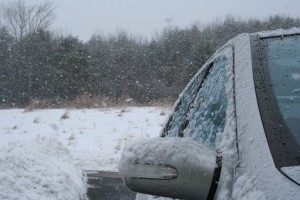 Groundhog day has been and gone, and winter is still here. It’s not showing any signs of going away for good anytime soon.
Groundhog day has been and gone, and winter is still here. It’s not showing any signs of going away for good anytime soon.
One of the problems with the gradual approach of spring is that the temperature is inconsistent, which speeds the formation of potholes. While they form all year round, they’re particularly evident at this time of year. The season’s freeze/thaw cycles really bring out the worst in Winnipeg’s roads, causing the pavement crack and then heave upward when water finds its way into the crack, and expands when it becomes ice. Potholes can be hard to see, and when they get covered in snow or slush, they’re particularly hard to see. It’s like they’re lying in wait for you to drove over them too fast, and wreck some part of your car.
Icy conditions are quite common, and can be disguised (and made worse) by a thin dusting of snow. Even if your car is equipped with snow tires, you’ll slide on the ice and face a potential accident. Fluctuating temperatures (warmer, sunny days and hard freezing nights) can lead to the formation of “black ice”, a clear covering that looks like wet asphalt, but is really a slick coating of ice that’s ready to throw you and your car into the ditch, or worse.
If your car’s made an unscheduled trip off-road, or you’ve got a flat tire, a dead battery, or worse – you’ve had a traffic accident, remember that Dr. Hook is here to help you. In an emergency, call us 24 hours a day at 956-HOOK (4665) or Toll Free 1-800-561-4665. Better yet, sign up online up now for our roadside assistance program, to get the peace of mind that comes with knowing your towing needs will be take care of in an emergency.
